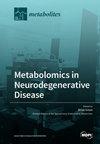Content Determination and Chemical Clustering Analysis of Tanshinone and Salvianolic Acid in Salvia spp.
IF 3.4
3区 生物学
Q2 BIOCHEMISTRY & MOLECULAR BIOLOGY
引用次数: 0
Abstract
Salvia miltiorrhiza is one of the famous traditional Chinese medicines for treating cardiovascular and cerebrovascular diseases. Tanshinone and phenolic acids are the main active compounds of Salvia miltiorrhiza, whereas the distribution patterns of the two kinds of components are still unclear among Salvia spp. In this work, high-performance liquid chromatography was applied to analyze the distribution patterns of major components in the roots and leaves of 58 Salvia spp. The results showed that the distribution patterns of tanshinone and phenolic acids in Salvia spp. varied significantly. Phenolic acid components such as rosmarinus acid, caffeic acid, and danshensu are widely distributed in the roots and leaves, and phenolic acids in the leaves of Salvia spp. are generally higher than that in roots. Tanshinones are mainly detected in the roots of Salvia przewalskii, Salvia trijuga, Salvia castanea, and Salvia yunnanensis. The content of major components of the different species varied significantly. The content of phenolic acids in most Salvia spp. generally followed the pattern of salvianolic acid B > rosmarinic acid > danshensu > caffeic acid both in the roots and leaves. Tanshinone IIA and cryptotanshinone were the main lipophilic components of Salvia spp. distributed in southwest China. A correlation between the distribution pattern of tanshinone and the genetic relationship of species was indicated in the work. This research systematically reveals the distribution patterns of tanshinone and phenolic acids in Salvia spp., providing a theoretical basis for the development and utilization of medicinal resources of Salvia.丹参中丹参酮和丹参酸的含量测定与化学聚类分析
丹参是治疗心脑血管疾病的著名中药之一。丹参酮和酚酸是丹参的主要活性成分,但这两种成分在丹参属植物中的分布规律尚不清楚。 本研究采用高效液相色谱法分析了 58 种丹参根茎叶中主要成分的分布规律,结果表明丹参酮和酚酸在丹参属植物中的分布规律差异显著。酚酸成分如迷迭香酸、咖啡酸和丹参素广泛分布于根和叶中,且丹参叶中的酚酸含量普遍高于根中的酚酸含量。丹参酮主要在丹参(Salvia przewalskii)、丹参(Salvia trijuga)、丹参(Salvia castanea)和云南丹参(Salvia yunnanensis)的根中检出。不同物种的主要成分含量差异很大。大多数丹参属植物根和叶中酚酸的含量一般遵循丹酚酸 B > 迷迭香酸 > 丹参素 > 咖啡酸的模式。丹参酮 IIA 和隐丹参酮是中国西南地区丹参属植物的主要亲脂成分。丹参酮的分布模式与物种遗传关系之间存在相关性。该研究系统揭示了丹参酮和酚酸类化合物在丹参属植物中的分布规律,为丹参药用资源的开发利用提供了理论依据。
本文章由计算机程序翻译,如有差异,请以英文原文为准。
求助全文
约1分钟内获得全文
求助全文
来源期刊

Metabolites
Biochemistry, Genetics and Molecular Biology-Molecular Biology
CiteScore
5.70
自引率
7.30%
发文量
1070
审稿时长
17.17 days
期刊介绍:
Metabolites (ISSN 2218-1989) is an international, peer-reviewed open access journal of metabolism and metabolomics. Metabolites publishes original research articles and review articles in all molecular aspects of metabolism relevant to the fields of metabolomics, metabolic biochemistry, computational and systems biology, biotechnology and medicine, with a particular focus on the biological roles of metabolites and small molecule biomarkers. Metabolites encourages scientists to publish their experimental and theoretical results in as much detail as possible. Therefore, there is no restriction on article length. Sufficient experimental details must be provided to enable the results to be accurately reproduced. Electronic material representing additional figures, materials and methods explanation, or supporting results and evidence can be submitted with the main manuscript as supplementary material.
 求助内容:
求助内容: 应助结果提醒方式:
应助结果提醒方式:


